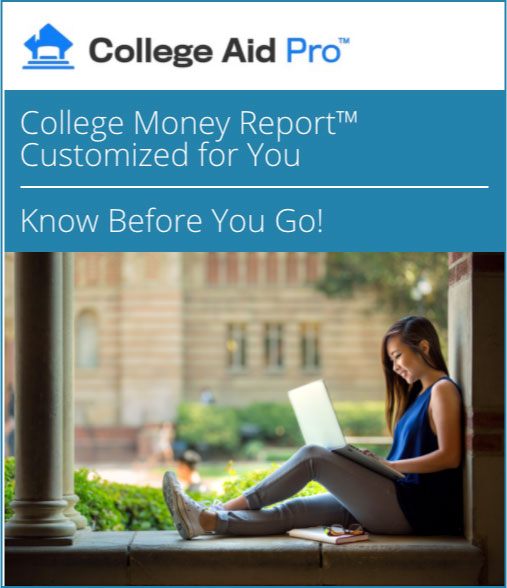Choosing a College: The Financial Aid Award Letter
By Joe Messinger, CFP®
February 17, 2023
High school seniors and their families are waiting on pins and needles in mid-February. They have acceptance letters from several colleges, but they might not know a very important key to the decision–how much it will cost! Colleges send out financial aid award letters that provide all the details, but those letters don’t always go out at the same time as the acceptance. The aid award letters are not always straightforward and easy to read, so let’s dig deeper into how to navigate your student’s financial aid awards, and how they impact your personal finances.
Financial aid award letters should cover specific expenses related to the student’s first year, including:
- First year’s tuition
- Room
- Board
- Fees
- Gift money (think: scholarships or grants)
- Possible student loans or work-study programs available
Ready to dive in? Let’s go!
What’s the bottom line?
With the financial aid award letters, families now try to figure out the best financial fit. Unfortunately, this task that seems easy on the surface can be much more complicated than students and parents realize.
Families need to be aware of some fine-print details to understand these letters. Each college will write them up differently. Apples-to-apples comparisons may be difficult.
Be aware of a couple of things in this process to ensure you don’t get in over your head:
#1: Look out for “front-loaded” financial aid award letters.
What does a “front-loaded” financial aid award letter look like? One of the things to look for when awarded a scholarship or a grant is whether it is renewable or not. Front-loading occurs when the college in question gives you a $2,000 or $3,000 scholarship, but only for the freshman year. When looking at the total cost, it may seem lower than other schools your student has applied to. It may be less expensive, but only for the first year.
Frontloading is a tactic used by colleges and universities to make it appear that every year is going to have this discount applied. Be cautious and understand what all four years will look like.
#2: If the scholarship is renewable, what are the criteria to keep it? And is it for 4 or 5 years?
A renewable scholarship usually requires students to meet certain criteria based on their GPA–often maintaining a 3.0 or a 3.2. If they meet the GPA requirement, they keep the scholarship yearly.
With more and more students not graduating in four years, families may also need to consider whether an award is renewable after those four years are up. If a student is in a 5-year program or most students in their field of study don’t graduate in 4 years, make sure the aid award renews in the fifth year. If it doesn’t, the financial plan must account for that missing aid in the fifth year.
#3: Determine what is self-help vs. gift aid.
Will your student have to pay back any of the “awards” they’re being given?
When reading financial aid award letters, distinguish between self-help and gift aid. Gift aid is money a student doesn’t have to pay back, and it lowers the bottom line amount owed.
Self-help aid includes both loans and work-study programs. Parents can get confused because the financial aid award letter says the total amount due is $20,000 when in reality, that figure includes $5,500 in loans. The student will eventually have to pay that $5,500. Self-help aid doesn’t lower the bottom line!
Sometimes colleges will show a Parent Plus loan on the financial aid letter to fill any gap between the cost and available aid. Parents need to approach Parent Plus loans with hesitation. Most parents of college-bound students are in their 40s to early 50s and would like to retire someday. A Parent Plus loan is essentially a new mortgage. When you are looking at an aid package, identify whether loans are part of the offer, realizing that it is money the student will have to pay back at some point.
Also, pay attention to work-study programs. Students work during college, and they earn a stipend. They can apply that money to their tuition bill or keep it. It is considered need-based financial aid, though, and is not taxable. Give careful consideration to work-study. Is it the right fit for a student? Will they work hard during their freshman year? Will that money be used for tuition, or will it be for living expenses outside the cost of attending school?
#4: What is the total loan amount, and what will the monthly payment be?
While we’re on the topic of loans, be sure to know down to the penny how much your student will need in loans to fund education over all four (or five) years. To ensure a student loan payment is not too burdensome, don’t take out more in student loans than a graduate anticipates making in the first year of their career.
For example:
If a graduate anticipates a starting salary of $40,000, the total student loan amount should be less than $40,000. If their loan balance is above that, a student has paid more than they expect to earn in their first year.
Next, try to discern the monthly loan repayment after your student graduates. Use a 10-year standard repayment schedule to calculate the monthly cost. Loan providers are more than happy to spread these payments out over 20+ years because they make twice as much interest. But does a future grad still want to be paying off student loans when they are in their 40s? Knowing the monthly payment makes the cost of college real for your student! Here is a good online tool to estimate a student loan payment.
#5: What is the net price, and how will you strategically fund all 4 years of college down to the penny?
When you compare eight award letters side by side, the key is mapping out the total cost of all four years. Don’t forget to anticipate tuition increases. What is the cost of attendance today, and what will be the cost in future years?
We know most schools will increase costs and tuition over those four years—raising their price from 3 to 6% per year. Factoring those annual increases into your calculation is essential. (Some schools are now touting tuition locks for all 4 years–a factor into your decision as well!)
Lay out the tuition for each year, and deduct any gift aid from each year. Write out how much in loans or work-study are factored in, and develop a whole picture of the actual costs.
Now, is the net cost the right fit?
An example we like to use is shopping for a new car. New cars come with lots of options in every class. For some, the added amenities of a luxury sedan like a Lexus or a Mercedes are well worth the premium price tag. But for others, a Honda or Toyota suits their needs just fine.
We challenge people to consider whether the extra cost or premium is worth going to a particular institution. Is it worth $50,000 more for a degree in a specific field of study to potentially get XYZ job?
Sometimes the answer is absolutely “yes.” But the premium price tag often does not provide comparable added value. For example, teaching elementary education will pay you the same salary regardless of where the degree is from. Most families need to figure out where the best value is, and where they can get the best education for the lowest cost to give their child the best opportunity to have a successful career.
Factoring In Private Scholarships
Private scholarships from sources outside the college itself will not be reflected on the financial aid award letter. How will private scholarships affect financial aid? It depends. In general, a scholarship FROM the college the student has earned based on merit will not be impacted by their outside private scholarships.
On the flip side, if a student is a need-based financial aid candidate and is awarded private scholarships, many colleges and universities will reduce the amount of need-based financial aid they award. This practice is called “scholarship displacement,” and some states are working to reverse this.
If a student is a need-based candidate earning private scholarships, try to work with the institution. If asked, many colleges these days will lower the number of need-based loans instead of gift aid. Lowering the loan amount is a better option.
Let’s wrap it up!
Overall, comparing your financial aid award letters is about getting down to an apples-to-apples comparison.
- How much money do scholarships or gift aid amount to?
- How much self-help (work-study or loans) is offered?
- How much will need to be paid back (loans)?
- What is the net cost for all four years down to the penny?
- How much can a family afford to pay from their monthly cash flow?
- How much can a family afford to pay from their assets?
The Consumer Financial Protection Bureau has put together a handy tool to help families compare financial aid offers side by side. As they roll in, compare them apples to apples and understand what the decision will mean when the student graduates. You can also leverage our free College Money Report™ tool to compare the expected cost of attendance at your student’s top three colleges.
The college years are one of the most expensive periods in a family’s life. Paying for college is probably the largest purchase a family will ever have to make after buying a home. Families need to do their homework and know exactly what they are buying to ensure they don’t have buyer’s remorse on a $100,000+ purchase.
Originally published 2/2018
Updated 2/2023


